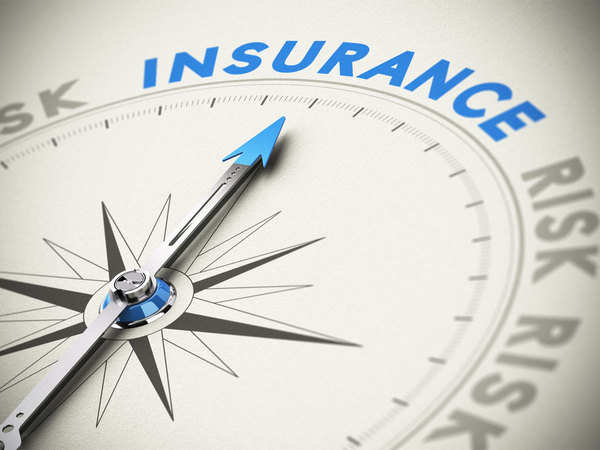Medical insurance is a kind of insurance that covers the cost of an individual’s medical and surgical expenses. It is sometimes used more broadly to include insurance covering disability or long-term nursing or custodial care needs. It may be used to reimburse patients for their medical expenses, such as for hospital and physician charges.
A distinction is often made between basic “major medical” insurance, covering serious illnesses and accidents, and “supplemental” insurance covering other expenses that may not be covered by a person’s medical plan.
Health insurance is a form of coverage that pays for medical expenses incurred by the insured.
Health insurances can reimburse the insured for expensive procedures performed by doctors or hospitals in their network. They can also cover costs like co-pay and deductible and other medical expenses.
The coverage provided by health insurance typically begins immediately after a deductible has been paid, but doesn’t cover the entire cost of the services – it is intended to reimburse the insured for some portion of their out-of-pocket expenses, at least partially. A person may have a policy through their employer, through a private company, or directly from an insurance company.
You’ve heard the news – insurance rates are going up. If you’re one of the millions of people who doesn’t have health insurance, then you’ll be happy to learn that we’re here to give you some insight on how much a doctor’s visit costs without insurance.
Medical insurance is really not such a hard topic to explain. It’s basically an agreement made between you and your health insurance provider, where they agree to pay for any needed medical treatments or hospitalizations. You have to pay them an agreed amount of money, every month, until the time that you terminate the contract.

You may be wondering what the point is of contract like those. Well, let’s say that you get into a serious accident and need to stay in hospital for more than six weeks. You would not be able to afford such a long durations of hospitalization unless you had medical insurance. If you didn’t, your family would have to pay the hospital bills.
Doctor visits can cost anywhere from $100-300 with or without insurance.
If you have health insurance, your insurer will usually pay a portion of the costs. The amount paid varies from company to company and policy to policy.
If you don’t have health insurance, then there are medical centers that offer discounted rates for those who do not have coverage or those who need care on a sliding scale. This means you pay based on your income and how much money you make per year.
As a result, the cost for a doctor’s visit may be as low as $30 or as high as $200-300 without insurance.
Doctor visits typically run around $100-$150 with insurance and can go up to $300 or above without it. But don’t despair if you’re not covered by insurance because there are ways to lower these costs depending on your situation.
If you’re visiting a doctor for the first time, then you may have to pay more unless it’s an emergency doctor visit or something similar. The same can be said of a specialist.
If you want to lower your costs, then it’s a good idea to have insurance. Even if you have a high deductible plan, you can usually see a doctor at little or no cost through co-payments and other types of cost sharing.
There are a few things that affect how much a doctor visit costs without insurance including the type of doctor that you’re seeing.
Different doctors have varying costs for their services, so that will affect how much you’ll pay. It is a known fact that the cost of doctor visit without a health insurance can be very expensive. Different circumstances may cause individuals to need to seek medical assistance while being uninsured. However, the question still remains on how much should be paid for doctor visits when you have no insurance.
The answer depends on where one decides to get treatment from. There is a difference in cost of doctor visits at the emergency room and those done by primary care providers such as pediatricians, family practitioners, internists and gynecologists. Without insurance, going to the emergency room can be extremely expensive because hospital charges for emergencies include “triage” or evaluation fees. This fee is on top of diagnostic tests, x-ray services, physical therapy, laboratory work and treatment or medication given. The average cost for an emergency room visit is around $1000 with some being charged as high as $2000.

On the other hand, a doctor’s visit in the same emergency room without insurance may only be around $100 to $150 per person which includes the doctor’s evaluation, x-ray services and laboratory fees. Even if the patient is referred to another specialist for further treatment or tests, the visit fee of this second physician will be around $75 to $100 per person again depending on the physician’s specialty.
Emergency Room Office Visit Treatment Facility or Lab Work without Insurance Triage fee –
$50 to $100 x-rays, lab work, evaluation and treatment – $300 to $500 Referral service to other physicians – Usually no charge but some providers may charge a referral fee of around $40 Consultation fees – $75 to $150 per person
As a result, a visit to the emergency room for treatment is three times more expensive compared with a visit at an office of a primary care physician. This may make sense as hospital admission is not required and it will still cost an average of around $300 including diagnostic tests, x-rays, evaluation fees, medication or treatment. If other tests or referrals are needed, the costs will be around $75 to $150 which is still three times cheaper than an emergency room visit.
So if you urgently need medical help and there’s no insurance coverage available for you, either go to the office of a primary care physician for consultation fee of around $75 to $150 or go directly to an emergency room for treatment of around $300+ per person.
